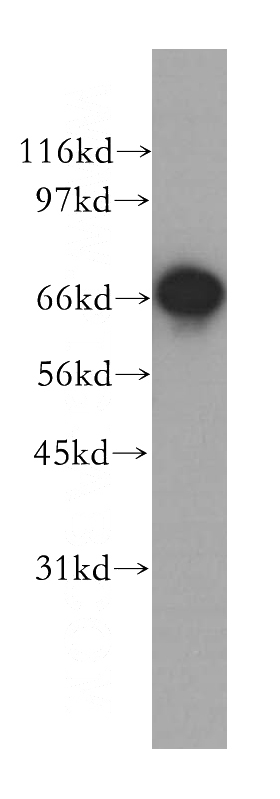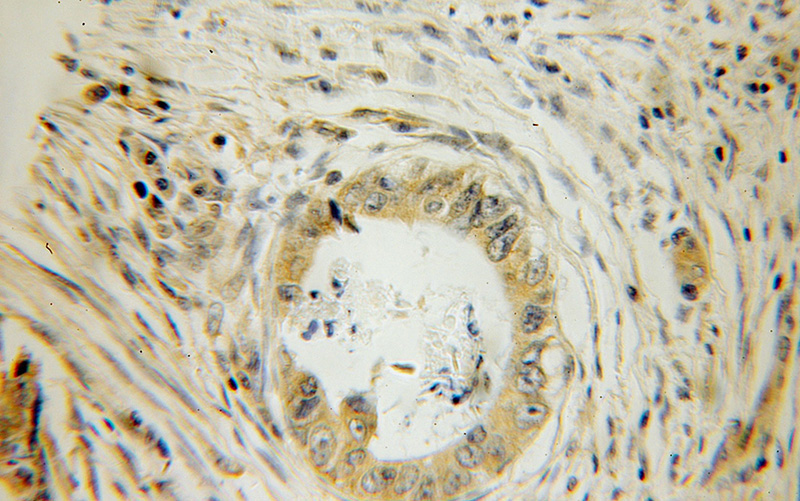-
Product Name
GSPT2 antibody
- Documents
-
Description
GSPT2 Rabbit Polyclonal antibody. Positive IHC detected in human colon cancer tissue. Positive WB detected in MCF7 cells, NIH/3T3 cells. Observed molecular weight by Western-blot: 69kd
-
Tested applications
ELISA, WB, IHC
-
Species reactivity
Human,Mouse,Rat; other species not tested.
-
Alternative names
eRF3b antibody; FLJ10441 antibody; G1 to S phase transition 2 antibody; GSPT2 antibody; GST2 antibody
-
Isotype
Rabbit IgG
-
Preparation
This antibody was obtained by immunization of GSPT2 recombinant protein (Accession Number: NM_018094). Purification method: Antigen affinity purified.
-
Clonality
Polyclonal
-
Formulation
PBS with 0.1% sodium azide and 50% glycerol pH 7.3.
-
Storage instructions
Store at -20℃. DO NOT ALIQUOT
-
Applications
Recommended Dilution:
WB: 1:1000-1:10000
IHC: 1:20-1:200
-
Validations

MCF7 cells were subjected to SDS PAGE followed by western blot with Catalog No:111176(GSPT2 antibody) at dilution of 1:500

Immunohistochemical of paraffin-embedded human colon cancer using Catalog No:111176(GSPT2 antibody) at dilution of 1:100 (under 10x lens)
-
Background
GSPT2, also named as Eukaryotic peptide chain release factor GTP-binding subunit ERF3B or G1 to S phase transition protein 2 homolog, is a 628 amino acid protein, which belongs to the GTP-binding elongation factor family. ERF3 subfamily. GSPT2 localizes in the cytoplasm and is highly expressed in IUCC stage II colorectal cancer (CRC). GSPT2 is involved in translation termination in response to the termination codons UAA, UAG and UGA and may play a role as a potent stimulator of the release factor activity of ETF1. It may play a role in cell cycle progression.
-
References
- Huang KL, Chadee AB, Chen CY, Zhang Y, Shyu AB. Phosphorylation at intrinsically disordered regions of PAM2 motif-containing proteins modulates their interactions with PABPC1 and influences mRNA fate. RNA (New York, N.Y.). 19(3):295-305. 2013.
- Su H, Meng S, Lu Y. Mammalian hyperplastic discs homolog EDD regulates miRNA-mediated gene silencing. Molecular cell. 43(1):97-109. 2011.
Related Products / Services
Please note: All products are "FOR RESEARCH USE ONLY AND ARE NOT INTENDED FOR DIAGNOSTIC OR THERAPEUTIC USE"
